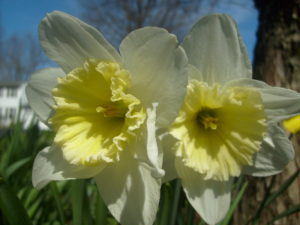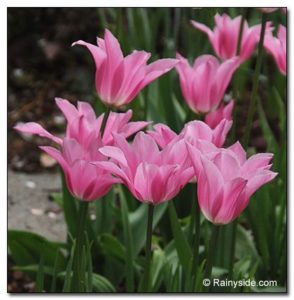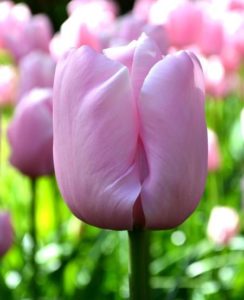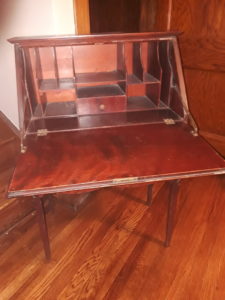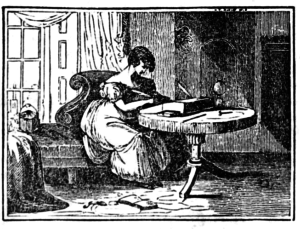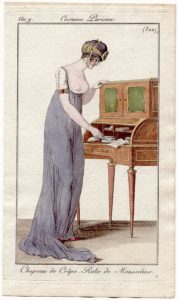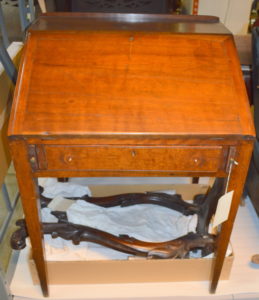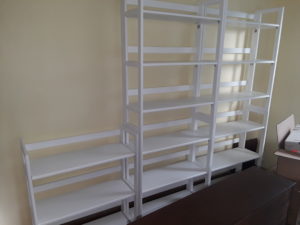 I am still holding onto the vision of having a nice writing room, but progress is slow. Here are my new bookcases, or should I say, five of them. I ordered six of these stackable bookcases, but found that the bottom shelves on two of them were broken, apparently damaged in transit. I duly called up the store and they said no problem, put the broken ones out for UPS to collect and they would ship me new ones. So I thanked the nice customer service person and did as she recommended. I packed up the two broken units, lugged them down the stairs and put them out, thinking at least I didn’t have to lug them back to UPS.
I am still holding onto the vision of having a nice writing room, but progress is slow. Here are my new bookcases, or should I say, five of them. I ordered six of these stackable bookcases, but found that the bottom shelves on two of them were broken, apparently damaged in transit. I duly called up the store and they said no problem, put the broken ones out for UPS to collect and they would ship me new ones. So I thanked the nice customer service person and did as she recommended. I packed up the two broken units, lugged them down the stairs and put them out, thinking at least I didn’t have to lug them back to UPS.
About a week later, two more arrived and I crossed my fingers that they would be intact, despite the fact that the boxes looked even more roughed up than from the first delivery. So I was not entirely surprised to find that the first box I opened contained yet another bookcase with a broken bottom shelf. At least the second one I opened was good. Once again I talked to a very nice customer service person and put the broken bookcase out for UPS to collect. I really don’t know what I’m going to do if the next one arrives damaged–maybe I’ll have to drive to the nearest store that carries them. There isn’t one within 100 miles, but at least I could make sure the bookcase makes it home intact.
Also in the things-not-working-as-hoped department, I need some roller blinds for the master bedroom. I measured the desired width–37 inches. then apparently I went downstairs and wrote down 27 inches. Again, I worked with a very nice lady at the store I ordered from, and despite it being my error, she took the blinds back and ordered me new ones.
I am grateful for good customer service people, but I’m also longing to be settled in and writing on a regular schedule! Please tell me that will happen eventually. Also, please feel free to share any recent misadventures or bloopers, so I know it isn’t just me. Thanks!
Elena




